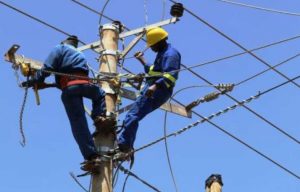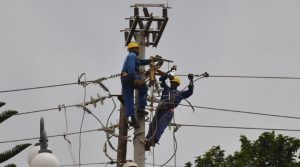The Kenya Power And Lighting Company (KPLC) more commonly referred to as Kenya Power has made it known that the cost of electricity in the month of March 2021, has increased by 1.20 Kenyan Shillings per unit. This includes taxes, and is also coming at a time when the compensation to far from affordable Diesel plants has increased.

Putting into consideration that the East African nation of Kenya has a total monthly consumption of more than 800 million Kilowatts (kWh) this development has in turn increased the total bill to more than 1 billion Kenyan Shillings.
The news is coming at a time when the Energy and Petroleum Regulatory Authority (EPRA) increased the foreign exchange, and also carried out an adjustment of the fuel surcharges which it levied on the electricity bills for the month of March 2021.

Fuel surcharge now stands at 3.54 Kenyan Shillings per kilowatt hour (kWh) which is considerably higher than the 2.61 Kenyan Shillings per kilowatt hour (kWh) that was the case in February 2021 and subsequently makes it the highest rate per kilowatt hour (kWh) in 1 year and 7 months.
The fluctuation of the foreign exchange also increased to a rate of 0.77 Kenyan Shillings per kilowatt hour (kWh) from the 0.66 Kenyan Shillings per kilowatt hour that was the case in February 2021.

The more expensive fuel surcharge in the electricity bills, is connected to a corresponding increase in the reliance on generators powered by Diesel in order to generate electricity, alongside the increase in the cost of Petroleum.
The Energy and Petroleum Regulatory Authority (EPRA) believes that the increased use of thermal powered plants is as a result of the reduced generation from the more cost effective Lake Turkana Wind Power coupled with a breakdown which occurred in one of the nation’s hydro electric dams.

The forex levy consists of the expenses which have been incurred in foreign currency by power generators including independent electricity producers, the Kenya Electricity Generating Company PLC (KenGen) and of course, the Kenya Power And Lighting Company (KPLC).
As stated earlier, the increase by 1.20 Kenyan Shillings per unit is the highest in almost 2 years and has led to the Kenya Power And Lighting Company (KPLC) commencing moves to reduced the fixed charges in contracts which have been signed with companies who generate electricity. The decision is expected to help increase its financial performance and also lead to a reduction in costs for the consumers.

How informative was this article? Are there any other news topics, categories, or How To topics, that you would like us to write on? Feel free to reach out to Mpesa Pay in the comment section.


